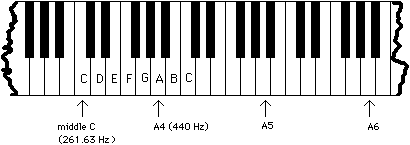
MU 207 Quiz 3 Study Guide
Office hours 4:30 - 5:30 pm Tues
MacLaurin A177
Source materials: CLASS NOTES, VIDEOS, COURSEPACK
The theory and practice of sampling/digitization: aliasing, quantization
The NYQUIST frequency is SR/2 (half the sampling rate)
If the input frequency is > 1/2 the sampling rate, the resulting frequency will be SR - input frequency.
Examples:
If the SR is 8,000 Hz, and you try to sample a sine wave with a frequency of 8,000, what will you get? -- 0 Hz (silence)
If the SR is 8,000 Hz, and you try to sample a sine wave with a frequency of 3,000, what will you get? -- 3,000 Hz (no aliasing, Nyquist is 4,000 Hz)
If the SR is 8,000 Hz, and you try to sample a sine wave with a frequency of 5,000, what will you get? -- 3,000 Hz
If the SR is 8,000 Hz, and you try to sample a sine wave with a frequency of 10,000, what will you get? -- 2,000 Hz
If the SR is 8,000 Hz, and you try to sample a sine wave with a frequency of 21,000, what will you get? -- 3,000 Hz
What is the difference between aliasing and quantization? What aspects of the sound do they determine?
Reference (not necessarily all used or referred to)

• At room temperature (68° Fahrenheit), the velocity of sound in air is: 343 meters/second = 769 mph = 1,128 feet/second = 769 miles/hour.
In water the speed of sound is: 1,497 meters/second.
![]()
![]()
![]()


(if your calculator can't do log base 2)
Rule of thumb: 6 dB increase in dynamic range per bit of quantization
1¢ is defined as 1/100th of an equal-tempered semitone